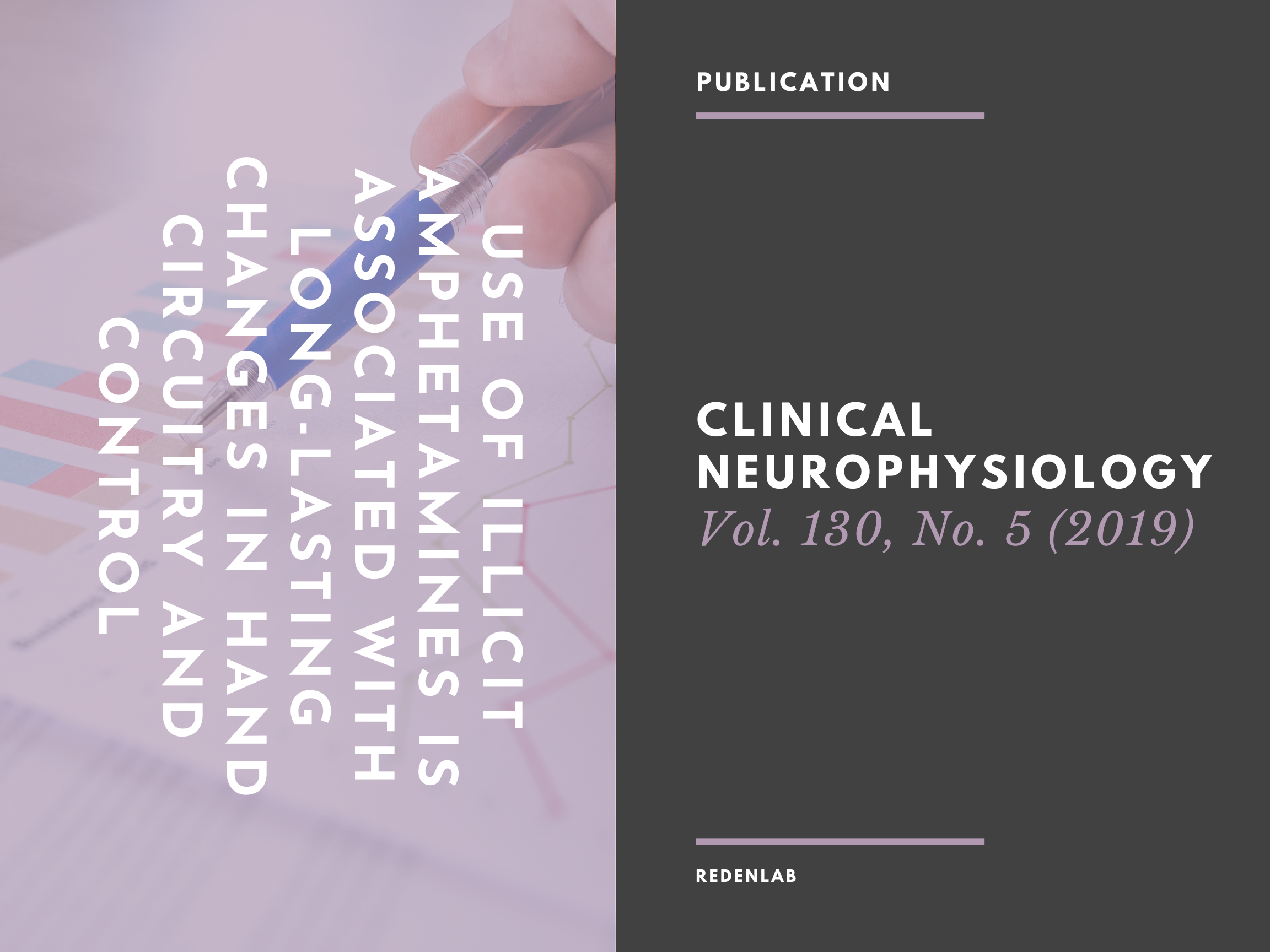Use of illicit amphetamines is associated with long-lasting changes in hand circuitry and control

Abstract
Objective
The study aim was to determine if use of illicit amphetamines or ecstasy is associated with abnormal excitability of the corticomotoneuronal pathway and manipulation of novel objects with the hand.
Methods
Three groups of adults aged 18–50 years were investigated: individuals with a history of illicit amphetamine use, individuals with a history of ecstasy use but minimal use of other stimulants, and non-drug users. Transcranial magnetic stimulation was delivered to the motor cortex and the electromyographic response (motor evoked potential; MEP) was recorded from a contralateral hand muscle. Participants also gripped and lifted a novel experimental object consisting of two strain gauges and an accelerometer.
Results
Resting MEP amplitude was larger in the amphetamine group (6M, 6F) than the non-drug and ecstasy groups (p < 0.005) in males but not females. Overestimation of grip force during manipulation of a novel object was observed in the amphetamine group (p = 0.020) but not the ecstasy group.
Conclusions
History of illicit amphetamine use, in particular methamphetamine, is associated with abnormal motor cortical and/or corticomotoneuronal excitability in males and abnormal manipulation of novel objects in both males and females.
Significance
Abnormal excitability and hand function is evident months to years after cessation of illicit amphetamine use.
Click here for more details.
